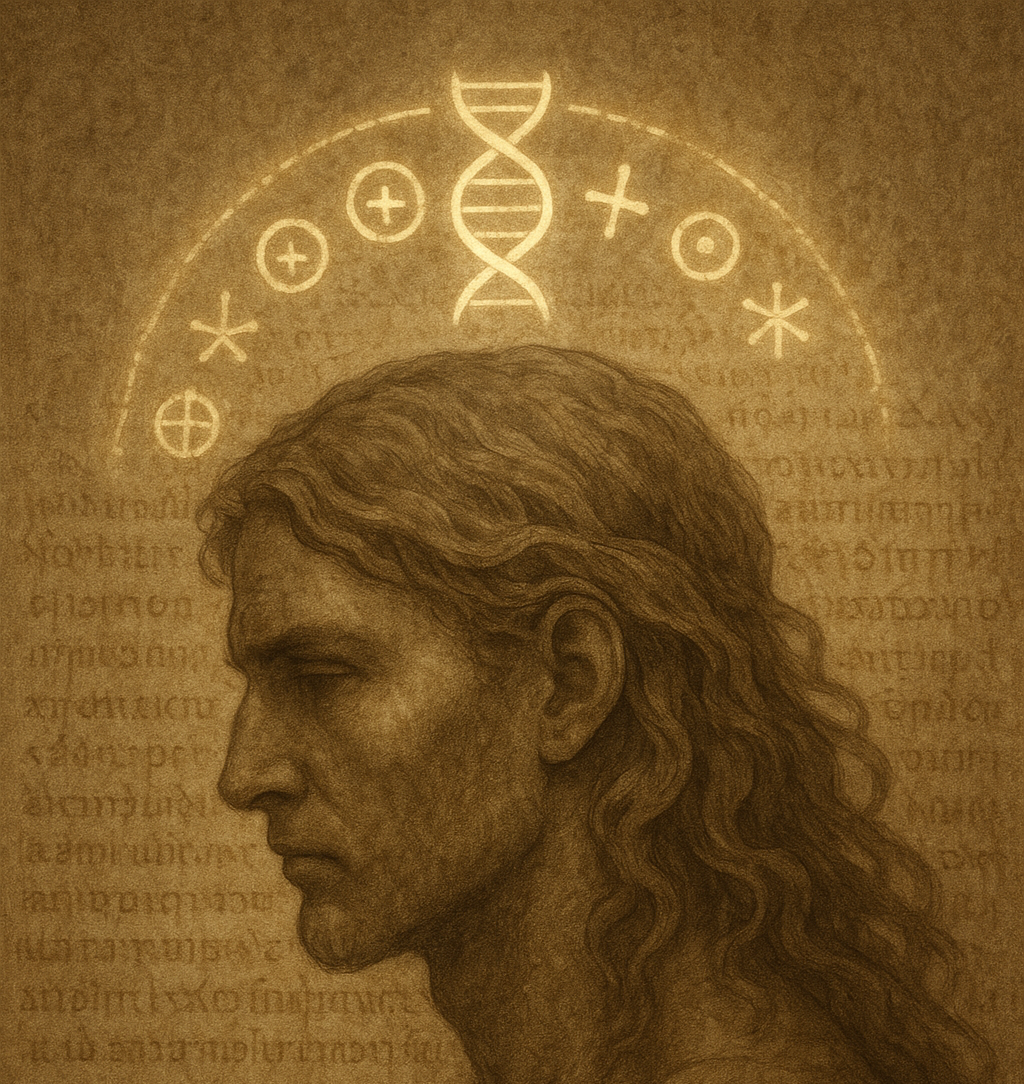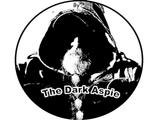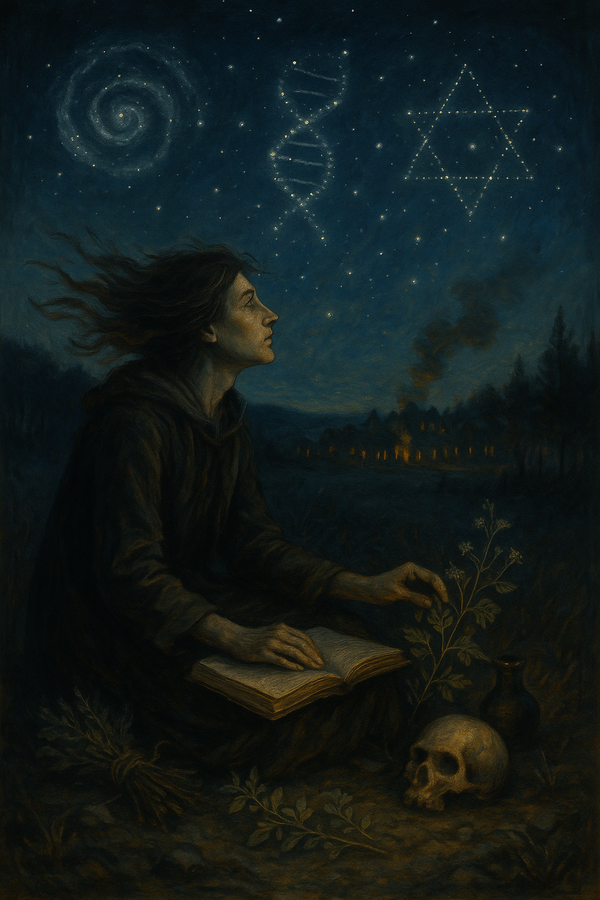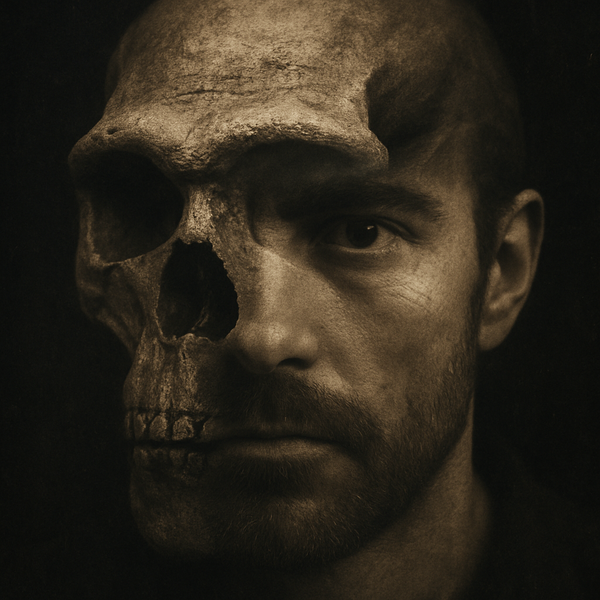The Nephilim Hypothesis: Mythic Memory and the Minds That Didn’t Fit

"There were giants in the earth in those days... when the sons of God came in unto the daughters of men, and they bare children to them, the same became mighty men which were of old, men of renown."
—Genesis 6:4
Introduction: Myths as Genetic Memory
What if myth isn’t just metaphor—but memory? What if stories like the Nephilim are echoes of genetic memory—encoded records of humans who may not have been quite like us? In Chapter 1, we explored how Neanderthal DNA may have influenced cognitive traits in modern autistic individuals. Now, we follow that thread deeper into ancestral myth. Could ancient legends of giants, forest dwellers, and hybrid beings be cultural fossils of neurodivergent minds? Could the Nephilim represent early encounters with cognitively different humans—or even a symbol of what we now call autism?
Some of us may carry not only Neanderthal DNA, but also the lingering stories told about those who bore it. And those stories—passed down through oral tradition, scripture, and symbol—may encode not just bodies, but minds that refused to conform.
Who Were the Nephilim?
The Nephilim appear briefly but powerfully in the Bible, specifically in Genesis 6:4. They are described as giants, men of renown, the children of divine and human unions. The Hebrew word "Nephilim" comes from the root npl, meaning "to fall" or "fallen ones."
For centuries, theologians, mystics, and fringe researchers have debated their identity. Were they literal giants? Angel-human hybrids? Or could they have been a metaphor for a type of human that didn’t fit into the emerging mold of early civilization?
Perhaps the Nephilim weren’t just tall or strong—but neurologically different. They may have been marked by uncanny silence, relentless focus, emotional reserve, or an aversion to social structures. In short, what today might be recognized as neurodivergent.
Nephilim as Cognitive Outliers
Imagine what it would be like in early tribal society to encounter someone with extreme focus, minimal verbal communication, or unusual sensory sensitivity. Someone who saw patterns in nature, communicated in symbols, or preferred solitude.
Would they be feared or revered? Would they be seen as touched by gods or cursed by them?
If autistic minds today are often described as deeply focused, logical, emotionally reserved, and pattern-driven, it's not hard to imagine how such traits might have been interpreted as divine or otherworldly in a mythic context. The Nephilim may not represent literal fallen angels—but rather humans who fell outside the social norm. To ancient communities, that difference made them legendary.
Some may have been silent observers, artisans of stone or metal, or astronomers watching the skies from forest edges. They may have used symbols or behaviors others found strange. This strangeness, over generations, could have morphed into awe. Or fear. Or both.
The Hybrid Theory: Neanderthals, Denisovans, and Memory of Difference
Modern genetics confirms that Homo sapiens interbred with at least two other archaic human species: Neanderthals and Denisovans. A 2018 discovery in Denisova Cave revealed a young girl whose mother was Neanderthal and father Denisovan—a direct hybrid of two lost human lineages.
Interbreeding events weren’t rare. They happened across Europe and Asia, and traces of this ancestry remain in our genomes today. But what if the legends of the Nephilim aren’t allegories or divine warnings at all—but mythologized memories of archaic hybrids? Beings who were part of us—but not fully like us.
Their appearance, behavior, and cognition may have differed enough to make them seem uncanny. They might have been stronger, quieter, more sensitive to light or sound, more introspective, and less social. And so, they became stories. Giants. Watchers. Fallen ones.
We must consider that mythology often encodes difference through exaggeration: to be a "giant" may not have referred to height alone, but to the magnitude of their strangeness, insight, or intensity.
Global Archetypes of Neurodivergent Beings
We don’t have to rely solely on the Nephilim. Cultures across the world have stories of hybrid minds—beings who lived apart, saw differently, or knew too much:
| Culture | Archetype | Traits |
|---|---|---|
| Celtic | Green Man / Old Ones | Silent, forest-bound, symbolic, revered |
| Norse | Völva / Seers | Visionary, isolated, ritualistic |
| Hebrew | Nephilim / Anakim | Outsized, powerful, emotionally distant |
| Indian | Rakshasa | Outsiders, obsessively focused, feared |
| Global | Wild Men / Watchers | Nonverbal, elusive, viewed with suspicion |
In many of these myths, the "othered" figure is neither wholly villainous nor wholly sacred—but deeply ambiguous. They often dwell at the edge of civilization, representing the liminal space between nature and culture, instinct and reason. A perfect metaphor for neurodivergent minds navigating neurotypical societies.
The Norse völva, often depicted as solitary seers wrapped in cloaks of raven feathers, were said to see fate in threads others could not perceive. Their silence was sacred. Their difference, feared.
The Myth and the Mind: Encoding Neurotypes in Story
Myth is a kind of social memory—a way to explain what doesn’t fit cleanly into a tribe’s current understanding. From shamans to hermits, from oracles to witches, many of the archetypes that carried mystical knowledge in ancient societies also display traits we might today associate with autism, ADHD, or synesthesia.
Temple Grandin once described herself as "an anthropologist on Mars"—a brilliant phrase that captures the essence of being neurologically alien in one's own culture. What if the Nephilim were our ancestors' way of explaining that same alienation?
To describe someone as a "Watcher" or "man of renown" might have been a socially accepted way to process those who operated under a different cognitive architecture. We didn’t always have diagnoses. We had stories.
Conclusion: Myth as Mirror
The Nephilim Hypothesis does not ask you to believe in literal giants or fallen angels. It invites you to see myth as a cultural mirror—reflecting our ancestors' attempts to understand those among them who were different.
Some of those different minds may have been neurodivergent.
Some may have descended from hybrid lineages.
And some may have simply thought in a way the majority could not comprehend.
To be labeled a "man of renown" might not have required brute strength, but uncommon vision. To be called a Nephilim might have meant standing outside the social fabric—a remnant of an older mind, etched into the stories we once feared—and are only now beginning to understand.
In the next chapter, we’ll shift our focus from the mythic to the historical—and explore how these ancient neurotypes may have led to real-world persecution during the witch hunts of early modern Europe.
Next in the series:
The Burnings: Autism and the Witch Trials
📚 References:
- Genesis 6:4, King James Version.
- National History Museum. (2018). Hybrid fossil of Denisovan-Neanderthal child discovered in Siberia. nhm.ac.uk
- Temple Grandin. (1995). Thinking in Pictures: My Life with Autism. Vintage Books.
- Stockholm University. (2022). DNA Research on Picts in Scotland. su.se
- Pauly, M. C., et al. (2024). Neanderthal Polymorphisms Enriched in Autism Spectrum Cohorts. Molecular Psychiatry.
- Steve Silberman. (2015). NeuroTribes: The Legacy of Autism and the Future of Neurodiversity. Avery.
- Tattersall, Ian. (2012). Masters of the Planet: The Search for Our Human Origins. Macmillan.
- Mithen, Steven. (1996). The Prehistory of the Mind: The Cognitive Origins of Art, Religion and Science. Thames & Hudson.
- Eliade, Mircea. (1964). Shamanism: Archaic Techniques of Ecstasy. Princeton University Press.
- Lewis-Williams, David. (2002). The Mind in the Cave: Consciousness and the Origins of Art. Thames & Hudson.




